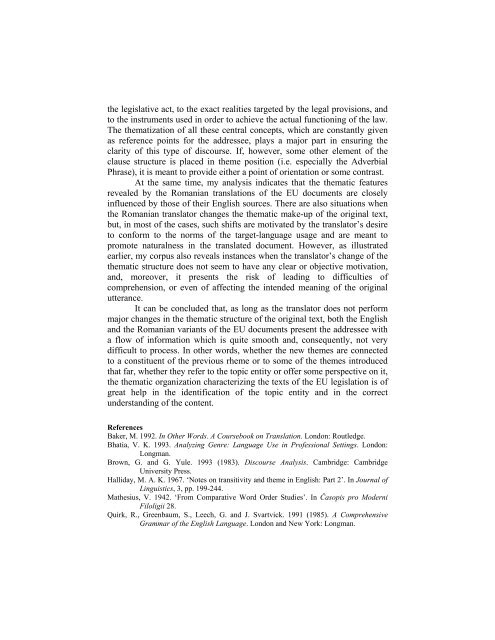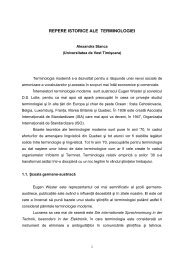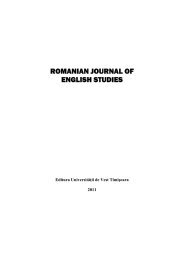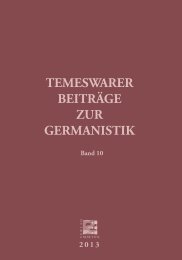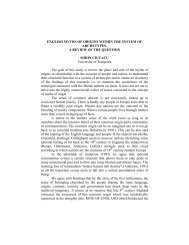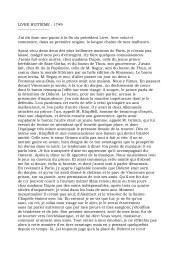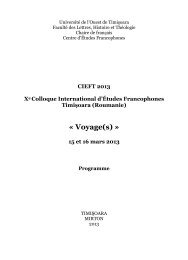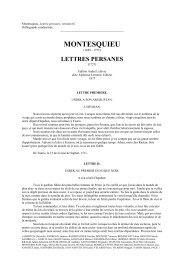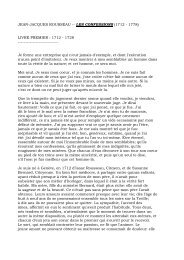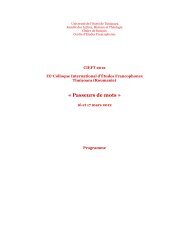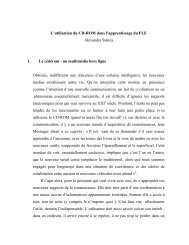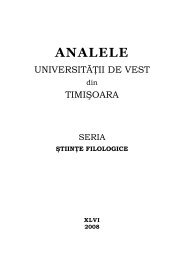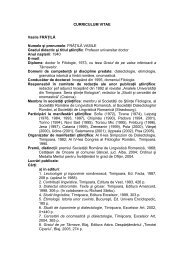TRANSLATION AND MEANING: A CULTURAL- COGNITIVE ...
TRANSLATION AND MEANING: A CULTURAL- COGNITIVE ...
TRANSLATION AND MEANING: A CULTURAL- COGNITIVE ...
Create successful ePaper yourself
Turn your PDF publications into a flip-book with our unique Google optimized e-Paper software.
the legislative act, to the exact realities targeted by the legal provisions, and<br />
to the instruments used in order to achieve the actual functioning of the law.<br />
The thematization of all these central concepts, which are constantly given<br />
as reference points for the addressee, plays a major part in ensuring the<br />
clarity of this type of discourse. If, however, some other element of the<br />
clause structure is placed in theme position (i.e. especially the Adverbial<br />
Phrase), it is meant to provide either a point of orientation or some contrast.<br />
At the same time, my analysis indicates that the thematic features<br />
revealed by the Romanian translations of the EU documents are closely<br />
influenced by those of their English sources. There are also situations when<br />
the Romanian translator changes the thematic make-up of the original text,<br />
but, in most of the cases, such shifts are motivated by the translator’s desire<br />
to conform to the norms of the target-language usage and are meant to<br />
promote naturalness in the translated document. However, as illustrated<br />
earlier, my corpus also reveals instances when the translator’s change of the<br />
thematic structure does not seem to have any clear or objective motivation,<br />
and, moreover, it presents the risk of leading to difficulties of<br />
comprehension, or even of affecting the intended meaning of the original<br />
utterance.<br />
It can be concluded that, as long as the translator does not perform<br />
major changes in the thematic structure of the original text, both the English<br />
and the Romanian variants of the EU documents present the addressee with<br />
a flow of information which is quite smooth and, consequently, not very<br />
difficult to process. In other words, whether the new themes are connected<br />
to a constituent of the previous rheme or to some of the themes introduced<br />
that far, whether they refer to the topic entity or offer some perspective on it,<br />
the thematic organization characterizing the texts of the EU legislation is of<br />
great help in the identification of the topic entity and in the correct<br />
understanding of the content.<br />
References<br />
Baker, M. 1992. In Other Words. A Coursebook on Translation. London: Routledge.<br />
Bhatia, V. K. 1993. Analyzing Genre: Language Use in Professional Settings. London:<br />
Longman.<br />
Brown, G. and G. Yule. 1993 (1983). Discourse Analysis. Cambridge: Cambridge<br />
University Press.<br />
Halliday, M. A. K. 1967. ‘Notes on transitivity and theme in English: Part 2’. In Journal of<br />
Linguistics, 3, pp. 199-244.<br />
Mathesius, V. 1942. ‘From Comparative Word Order Studies’. In Časopis pro Moderni<br />
Filoligii 28.<br />
Quirk, R., Greenbaum, S., Leech, G. and J. Svartvick. 1991 (1985). A Comprehensive<br />
Grammar of the English Language. London and New York: Longman.


